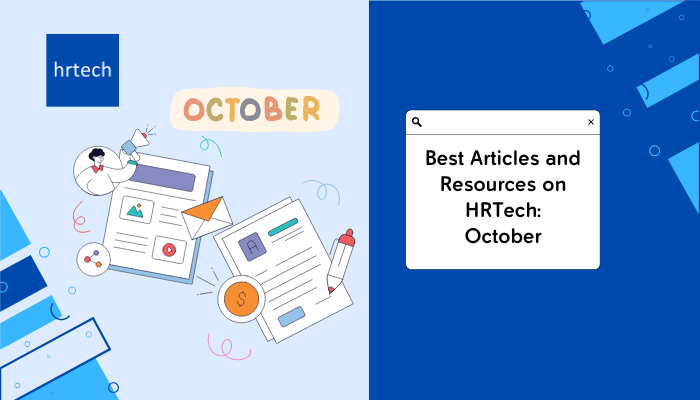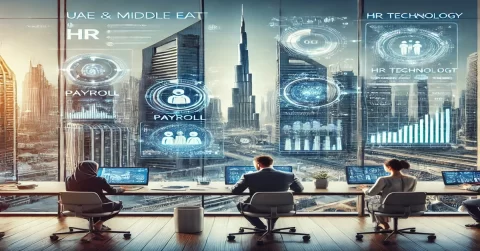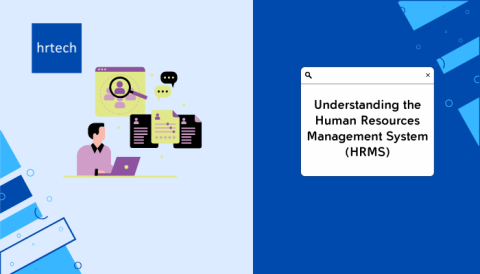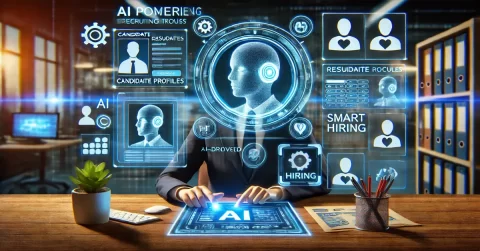Best Articles and Resources on HRTech: October 2020
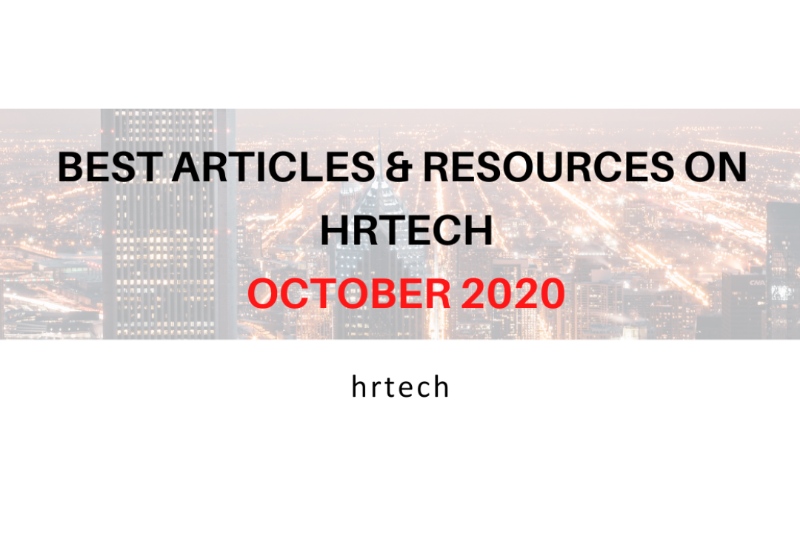
I. RESEARCH: How to Get Results from Your HR Transformation
By DAVE ULRICH, NORM SMALLWOOD & ALAN TODD
The ongoing crisis has accentuated the importance of human resource issues to help an organization succeed in the marketplace. Organizations are undergoing HR transformation through HR innovations in programs, processes, practices, and digital apps. Dave Ulrich and the team have developed the Organisation Guidance system to guide organizations to measure the effectiveness initiatives in talent, capability, and leadership to deliver results to employees, strategies, customers, investors, and communities. The Organization Guidance System (OGS) has been developed through in-depth research and expertise in HR transformations of organizations through books, articles, workshops, and consultations and data collected data from over 100,000 respondents. The research has evolved the study of HR transformation into four stages of maturity and nine domains of action.
Figure 1 provides a comprehensive template for assessing overall HR Transformation along 9 domains for each of the 4 levels of maturity (36 cells overall).
Read the detailed research here.
II. RESEARCH: AI@Work Study 2020
By Oracle and Workplace Intelligence
2020 continues to bring new changes—and challenges—to the way people work and live. The shifting economy and decrease in human interaction have impacted the mental health of many individuals in the workforce. Employees are turning to technology for support, and their organizations must take notice. To ensure business continuity, agility, and productivity, HR leaders need to prioritize employees’ mental health and provide them with tools for managing stress, maintaining focus, and preventing burnout. The workforce is ready for the support offered by AI, and HR leaders are primed to drive its adoption as a tool for mental wellness.
Key Findings from the report by Oracle, Workplace Intelligence are:
78% of employees in 2020 were negatively impacted by their mental health
85% say their mental health issues are causing sleep deprivation, poor physical health, reduced happiness at home, suffering family relationships, or isolation from friends.
68% of people would prefer to talk to a robot over their manager about stress and anxiety at work
75% say AI has helped their mental health at work by giving them the necessary information for their jobs (31%), automating tasks (27%), and reducing stress (27%)
76% of workers believe their company should be doing more to protect the mental health of their workforce.
Access the AI@Work Study 2020 here.
III. RESEARCH: Culture 500: Introducing The 2020 Culture Champions
By DONALD SULL AND CHARLES SULL, MIT Sloan Management Review
The Culture 500 measures and compares more than 500 U.S. companies across nine cultural dimensions, by narrowing in on employee data to examine what makes company culture distinctive and effective. The interactive index allows us to see how companies perform across the cultural values that matter most to employees, such as respect, collaboration, and diversity.
After rigorous analysis, the CultureX research team, through its Machine learning approach using cutting edge natural language processing, identified 21 companies that are head and shoulders above their industries for using the Big 9 values- Agility, Collaboration, Customer, Diversity, Execution, Innovation, Integrity, Performance, and Respect.
These Culture Champions produce vibrant, multifaceted cultures that succeed spectacularly for their employees and share a strong financial performance, female leadership or representation, and psychologically safe environments. Learn more about the unique cultures of our 2020 Culture Champions here.
IV. RESEARCH: Expanding AI’s Impact With Organizational Learning
By SAM RANSBOTHAM, SHERVIN KHODABANDEH, DAVID KIRON, FRANÇOIS CANDELON, MICHAEL CHU, AND BURT LAFOUNTAIN, MIT Sloan Management Review
Our research shows that these companies intentionally change processes, broadly and deeply, to facilitate organizational learning with AI. Better organizational learning enables them to act precisely when sensing an opportunity and to adapt quickly when conditions change. Their strategic focus is organizational learning, not just machine learning. Organizational learning with AI is demanding.
In survey-based research, more than half of all respondents affirm that their companies are piloting or deploying AI (57%), have an AI strategy (59%), and understand how AI can generate business value (70%) – a significant increase in adoption, strategy development, and understanding from four years ago. Despite these trends, just 1 in 10 companies generates significant financial benefits with AI. It is important to get the basics right while building AI solutions that the business wants and add the ability to learn with AI to get significant financial benefits. Click here to explore three essential characteristics of organizations that learn with AI.
V. RESEARCH: Will HR transformation be the thread that ties value to experiences?
By ANDY LOMAS, PETER FOX, Ernst & Young
To activate at scale the strategically relevant and impactful people experiences that fuel consumer, financial and societal value, HR must abandon the comforts of a vertical silo and operate horizontally across the enterprise It must be the thread that weaves together strategy and operations, liberated by digitalization to enable agile team formation and instant-access people services. With the HR function going through a major transformation, it is time to embrace the fact people strategy sits at the core of the future of the organization. Powerful people functions will work across the organization rather than as a silo, be driven by analytics and data but focused on delivering a human experience.
The research suggests 3 key aspects to achieve HR transformation:
- Reframing the HR function empower people to be a lot more flexible, adaptive, and project-oriented in an agile manner.
- Adjusting KPIs by measuring outcomes it can control, rather than those it can influence, co-own employee experiences, and align with the broader business goals & priorities while keeping the employees at the center.
- Lastly, by embracing technology as it is going to be central to the evolution of HR, as it can now deliver people experiences that enable and inspire employees, leveraging technology at various moments that matter in the employee journey.
E&Y proposes a reimagined HR operating model – The People Value Chain – which comprises three critical components that can drive this transformation: digital people teams, virtual global business services, and agile people consultants.
The People Value Chain: An operating model, answering the imperatives affecting the future of HR. Source: Ernst & Young
“Hard-wired with the listening, innovation, and people-consulting capabilities required to evolve side-by-side with a business. In this operating model, the People Value Chain rests on three core components: the digital people team, people consultants, and virtual global business services (VGBS).”
Know more about the new operating model here.
VI. TRENDS & INSIGHTS: Perspectives, Technology is changing HR: Philippa ‘Pip’ Penfold, CEO & Co-Founder, People Collider
By LEANNE KELLY, BPS world
In this insightful article, Philippa ‘Pip’ Penfold, CEO & Co-Founder of People Collider, shares her views on the technologies likely to impact HR both now and in the future, top tips for teams looking to evaluate their tech stack and her take on bias in Artificial Intelligence.
Three technologies that will impact HR both now and, in the future, include:
- Artificial Intelligence (AI), that has found widespread use in recruitment but should be used with caution due to the bias that can creep into the algorithms to avoid the risks. Personalizing the learning journey with AI shows the promising potential for its use in L&D.
- Virtual Reality (VR). Reducing the cost of hardware and software has made VR more accessible in the education and learning space and we might see some exciting developments in the VR space, particularly in the current environment as education and learning experiences have moved online due to the pandemic.
- Blockchain. Blockchain is a technology that will have a deep impact on HR teams because it is going to change and challenge the HR’s data management paradigm. Blockchain is likely to result in HR no longer owning employee data. This is a big shift for HR. Historically we have been the keepers of employee data, a role we take very seriously because of the confidentiality and security of the information.
As HR teams adopt technology and embark on HR transformations, Pip urges the HR teams to start with the problem like – ‘What’ problems they need to solve, ‘which’ are most important for business? What problems are your current tools solving, and creating? When defining the problems make sure to clarify whether the problem is an HR problem or an employee problem. The next step includes prioritizing the challenges as HR needs to focus on the problems that are most valuable to the business; auditing your existing systems and ensuring employee experience is given weightage, work with IT to work together to understand the technology landscape of the organization, understand the vendor roadmap to align with business need and lastly stop looking for the perfect system, the one-size-fits-all system does not exist. The goal is to design and create the best-fit tech stack for your business.
Read the full article here.
VII. TRENDS & INSIGHTS: Tech Is Transforming People Analytics. Is That a Good Thing?
By TOMAS CHAMORRO-PREMUZIC & IAN BAILIE, Harvard Business Review
Many successful corporations are accelerating their digital transformation to deploy smart technologies around AI and big data to improve their talent management systems. In an increasingly virtual world of work, the volume of data available to understand and predict employees’ behaviors will continue to grow exponentially, enabling more opportunities for managing through tech and data.
Harnessing the power of data-driven insights using People Analytics, companies such as Rabobank, Merck, and National Australia Bank are all using employee listening to understand how their employees are coping with new remote working arrangements, how their need for support are changing, and what their preferences are for returning to work. Using techniques such as stratified sampling and text analytics on free-text comments and discussion boards, companies can gain valuable insights into what’s important to their employees in a rapidly changing environment, while avoiding survey fatigue and preserving anonymity at an individual level. New technologies could be used to keep people safe, monitoring their mental and physical well-being to help organizations make workplaces safe and ensure a healthy reopening of their offices in the post lockdown phase.
Technology and Analytics if used unscrupulously can lead to micromanaging and become overly intrusive. Read more about it in the article here.
VIII. TRENDS & INSIGHTS: Top 5 digital HR trends to watch out for in 2021
By Ryan Lowe and Kanika Arora, ET HRWorld
The successful accelerated adoption of tactical digital HR tools has led to universal appreciation and recognition of what HR can achieve if pushed to act urgently. It is now time to take a step back from the chaos and attempt to look forward to what 2021 will herald for business and HR professionals. EY’s global ‘Physical Return and Work Reimagined’ research indicates that 79% of employers are looking to improve digital workforce tools extensively/moderately, and over 84% of employees to believe that this is an absolute necessity. We believe that there are five trends that organizations should focus on to really change the digital HR paradigm.
- Workforce analytics tools will enable optimization of workforce costs:
- Digital tools will help balance employee productivity and wellness
- Next-gen digital and virtual collaboration, communication and engagement tools will redefine human interaction
- App-based HR ecosystems will enhance seamless employee experience
- AI/ML-based tools will re-define the functional capability building and learning ecosystem.
Read the full article here.
IX. TRENDS & INSIGHTS: Innovative New HR Tech Vendors
By JOSHBERSIN
In his latest article, Josh Bersin lists some HR Tech vendors, making important innovations, to watch out for. The list includes:
- Amplify Conversational Microlearning by Culture Amp. Built on the vision from Zugata, the system gives managers and employees a set of small micro-learning messages, organized into an end-to-end learning program. The platform sends the user regular messages every day or so, and they come together with interactions and assignments that take the user through a learning program.
- Valamis: Enterprise Learning Platform to Replace Legacy Systems. Valamis is a modern end-to-end learning platform that helps companies with empathy mapping, learning journeys, and role-based learning
- Grow by Lattice: Development Solution for Performance Management.
- Hitch, the latest talent marketplace is a software platform that matches projects to internal employees, helping employees quickly find developmental opportunities, projects, mentors, or new roles in the company.
- Eskalera, which has built a very innovative way to measure and analyze diversity and inclusion practices in a company.
- ServiceNow Safe Workplace Apps now offers a wide variety of applications for safe workplace attestation, employee location and scheduling, case and knowledge management, and communication.
- Emtrain, Scenario-based Diversity and Harassment Training That Drives Change. Emtrain, a training company that now offers a compelling video-based diversity and harassment training that helps benchmark employees’ behaviors through innovative surveys in each training module.
- Workplace by Facebook. The workplace offers video conferencing and sharing, groups and content sharing, learning content integration, and all sorts of open integrations with tools that provide employee communications, social recognition, and frankly any employment application that could be delivered through chat (that means anything)
- Microsoft Teams and Project Cortex. Pitched as the most disruptive and possibly earth-changing HR Tech vendor of all, the Teams platform with lots of APIs and easy ways for various HR and employee applications to the plugin. I find that almost all our large clients now use Teams and the AI-based indexing technology will soon be enabled in the back end to help you find documents, people, experts, and contracts at lightning speed.
For more details, read here.
X. BLOG: Tech Should Enable Change, Not Drive It
By DAN HIGGINS & NICOLA MORINI BIANZINO, Harvard Business Review
The world is changing in rapid, unprecedented ways, but one thing remains certain: as businesses look to embed lessons learned in recent months and to build enterprise resilience for the future, they are due for even more transformation.
If the Covid-19 pandemic is proving that smartest, most nimble, and most innovative enterprises will be human enterprises where business transformation is people-led transformation aided by technology: with employees(humans) at the center, ensuring that technology and innovation meet genuine needs. Companies that place humans at the center — while leveraging technology at speed and enabling innovation at scale — accelerate the value they create in the long-term while making strides to reframe and thrive in the future. There are four critical approaches to build a Human Enterprise: increase humanity, remove friction, value inclusion, and deliver at speed. Read this article to understand these in detail.
XI. BLOG: Shaping Employee Experience Through Your HR Technology Stack
By KIM BILLETER, Forbes Council
Talent management over the years has become significantly more complex as organizations try to tackle everything from performance management to well-being, productivity, and beyond. Technology has a valuable role to play here, enabling companies to design personalized employee experiences at scale rather than simply provide a blanket approach to all initiatives from benefits and rewards to learning and development (L&D). This article outlines how employees and their experience can be at the center of such experience platforms, and how the data around employee sentiment and well-being can provide meaningful insights into short-term and long-term levels. Read more here.
XII. BLOG: 5 Tips For Making Smart, Ethical HR Tech Decisions
By JOHN SUMSER, HR Executive
As workplaces around the world are in varying stages of reopening, with many organizations moving to long-term remote work; health, safety, and ethics must be a top priority for HR and business leaders. A holistic view of safety—encompasses physical, mental, emotional, and financial safety or the impact of intelligent tools on the employee and organization. As the pandemic’s impact on the workplace continues to evolve, new technology innovations that address the health and safety impacts of COVID-19 are already exploding, and Sumser predicts it will come in waves: physical health monitoring and screening, office traffic and control mechanisms, safety forecasting and, finally, workforce health assessment and monitoring.
To make ethical and forward-thinking decisions about the tools, Sumser advises HR leaders to follow five principles; taking the time and have ethics in the office reopening plans to avoid risks of litigations that may arise out of hasty decisions; understanding minimum requirements on health and safety for guiding HR tech decisions; understanding the HR tech and the problem it solves before buying; ensure technology decision-making helps the organization to advance and adapt into the future; having a clear picture of what it will take to discontinue usage.
Read more here.
XIII. BLOG: 10 Ways Leaders Can Improve Engagement and Wellbeing
BY DAN WITTERS, Gallup
There are clear returns on investment for building a workforce that is engaged and has high holistic well-being. And, Leaders can make a substantial difference in their employees’ performance and lives by including wellbeing principles in engagement programs and making the most of their reciprocal, additive effects.
Ten actions leaders can take to increase employee engagement and wellbeing and improve business outcomes, that align with the Gallup engagement survey, include:
- Including employees in the wellbeing conversation
- Linking the well-being of each employee to the successful mission or purpose of the organization
- Encouraging participation in wellbeing activities when setting job expectations and goals
- Helping employees identify the elements of wellbeing that comes naturally to them and at which they are most successful
- Recognizing employees for their wellbeing achievements.
- Following up to show care
- Creating a ‘Wellbeing Board of Directors.’
- Creating a sharing network to socialize best practices
- Explicitly linking each workplace wellbeing activity to at least one of the five elements
- Include well-being goal-setting and milestones in work reviews and progress meetings.
Read these actions in detail here.
XIV. EVENT: AI & The Evolved Recruiter
By Phenom
As HR professionals’ transition into a seemingly all-virtual talent acquisition practice, modern technology becomes a key player in managing today’s unfamiliar, unpredictable talent landscape. AI increases recruiting efficiency and enables better decision making, but there are questions to answer and impressions to debunk before recruiters can make the most of today’s emerging tech. Artificial intelligence and automation allow talent acquisition pros to focus on what really matters: building meaningful candidate relationships. The virtual event AI & The Evolved Recruiter explored the endless ways AI enables recruiters to work faster and smarter, maximizes productivity, and advances the talent experience for all. Some interesting sessions include:
- EVERYDAY AI: UNDERSTANDING AI’S ROLE IN OUR DAILY ACTIVITIES (By Stacey Harris, Chief Research Officer, and Managing Partner, Sapient Insights Group) Using AI for recruiting and HR, enabling automation to works with the recruiters to help prioritize most strategic and thought-provoking work.
- LEVERAGING AI TO HIRE FOR DIVERSITY: Implementing Diversity, Equity, and Inclusion (DE&I) strategies is a top priority for many organizations. Emerging tech has the power to cultivate a workforce of all cultures, norms, and perspectives, and build a community where everyone feels like an equal part of the team. The session covers how AI-powered fit scoring can help to connect with a diverse set of high-performing candidates, while AI insights reveal diversity hiring trends.
- THE 5 MISCONCEPTIONS OF ARTIFICIAL INTELLIGENCE & MACHINE LEARNING (By John Sumser, HR Examiner). Are artificial intelligence and machine learning the same thing? Has AI reached its peak? Is AI dangerous? The session dives into the biggest misconceptions about AI and ML — and separate fact from fiction.
- AI IS A JOURNEY, NOT A PRODUCT. The session shares how Kuehne+Nagel and Phenom approached AI in the employee experience, their vision for success, and the progress they’ve made, and an inside look at how large-scale AI projects unfold.
Watch the session in the on-demand event here.
About the author:

Swechha Mohapatra (IHRP-CP, Associate CIPD) is a Senior Consultant – Digital HR at hrtech.sg and has over 7 years of global experience in various Talent functions. She is a passionate HRTech evangelist, a member of the member of the IHRP HRTech CoP Taskforce and an avid learner who is certified Six Sigma-Green Belt with a background of MBA (Specialization in HR and IT) and Master’s in Labor Laws and Labor Welfare.
